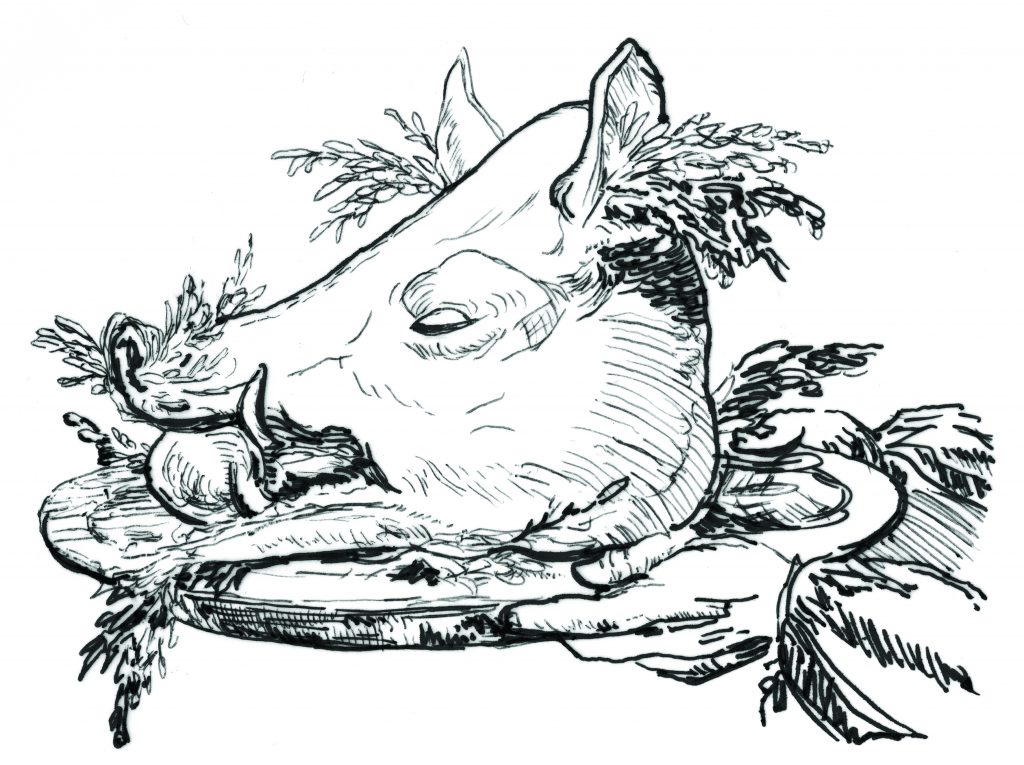2014.01-12 TCAC 關鍵議題駐村計畫 III : 黃大旺 – 無主體性的主體性聲音-日本關西屎槓(scum)文化生成史的行動考察
2014.01-12 TCAC Burning Issue III : Non-subjectivity of the voice in subjectivity by Huang Dawang
(For English please scroll down)
無主體性的主體性聲音:日本關西屎槓(scum)文化生成史的行動考察
黃大旺
1)對scum的思考
社會上普遍認定,以模仿作為一種能力,最終必須以原創為目的。我們往往可在臨摹作品的過程中,發現不同的特色及優缺點,進而產生出原創物。事實上會面對這種課題的,不僅是藝術家個人,社會在發展出自己的性格時,也將面臨同樣的抉擇。任何開發後進國都會面臨一個問題:如何通過既有的開發模式,走出適合自己的道路?
日本在近代化的過程中廣泛移植西方制度,並發展出自己的特色,堪稱由「模仿」發展出「原創」的具體例證。
2)界定
然而,集體模仿之中必形成各種路線,並產生目標偏失的模仿者。按照此處「模仿最終須以原創為指標的教條,我們可以再將偏失者分為兩種:一種人培養了極佳的臨摹能力,索性從此透過再現他人的作品來展現自我;另一種人因種種無意的障礙或故意的拒絕,在剛起步的臨摹階段就敗下陣來,拿不出(或不拿出)全新的東西,也無法(或不願)照搬舊有的東西,只能扭曲地撿拾他人作品或社會中的資訊碎片和消費品殘餘,雖然如此,一種無主體的主體性仍能於焉產生。如果以聲音或音樂作品和表演來看,做場樂團、流行歌模仿大賽、古典和爵士樂的經典/標準曲重演,都屬前一類。這類藝術家、音樂家及其作品,固然不以新開典範為目的,卻也因在特定典範中良好表現而獲得大眾承認。至於後一類,在長期遭到忽視的待遇下,這二十年來也慢慢確立了自我認同─這正是我們好奇的主題。
3)黑狼那卡西
本人自二○○四年以「黑狼那卡西」名義演出至今,或許不是由上述議題出發,但在方法上卻與這裡透露的訊息重合。連藝名都只差「黑手那卡西」一個字,其作品有一部份以「拾人牙慧」為目標,在不倫不類的失敗模仿以及對其他作品東抓西取中,取笑並批判「模仿」與「原創」的區分,奠定了「黑狼流」,也獲得觀眾的喜愛。本人企圖認真演奏特定樂器與既有曲目,觀眾往往呈現與那卡西相近的反映。本人時常播放平時愛聽或改編過的既有歌曲,搭配怪異肢體動作,乍看來更像一個自嗨的樂迷把私底下的狂喜狀態現給公眾看。黑狼那卡西正是屬於第二條中的後者,並懷有自覺。這一類的藝術家既不承認自己是藝術,又不願被貼上藝術家的標籤,因為他們更像一個明明只是跟著臺上明星擺動、卻又想衝上臺去搶鋒頭的觀眾。
4)問題與對象
之所以選擇赴日駐村及考察,是因為日本作為東亞「由模仿至原創」的國家典範,一百多年來必定累積了不少相關思考與行動。而那些「連好好模仿都做不到,更遑論原創」的「藝術家」雖在近來匯聚了目光,但他們是怎麼走到這一步的呢?他們如何建立自我認同,在俗見下站上舞台「演出」(那算是演出嗎?),進而發展成一個社群?他們怎麼看待模仿與原創的辯證關係以及被社會排除(如果他們認為有的話)的狀態?他們如何相互評價並看待原創藝術家和優秀的模仿者(傳統的再詮釋者)?他們自認是演出者還是「舞台上的觀眾/樂迷」?這些「藝術家」往往非聲音藝術或音樂專業出身,這是否意味著進入演出的門檻相對更低?可是他們的數量又為何較少?他們在平日工作之餘,如何生產作品?我們希望以日本「關西阿宅世代(関西ヲタ世代)」為觀察與介入對象,思考以上問題。這麼做也更有益黑狼那卡西在創作上的自我反省。
5)對象簡介
5-1 No.305
「關西阿宅世代」最具代表性的人物之一,在關西大學就讀期間以日本動漫典故為內容創作,並且在搖滾場景發表創作歌曲或翻唱動畫歌曲。目前經營T恤專賣店。
5-2 惡魔大根
次文化表演企劃(特別是與動漫相關企劃),以惡搞網路話題的表演著稱。有一些演出已經進入了行為藝術的領域。
5-3 中田氏大百科
成員為一群1994年左右出生的男生,在2008年出道時被譽為具有核子彈頭一般毀滅威力的表演,是此群人中最年輕一群。主唱Beat從小透過網路吸收各種音樂知識,中學二年級即出道,以電子噪音(預錄)詮釋他喜好的動畫歌曲。演出形式與日本知名的噪音團體,如非常階段、The Gerogerigegege或C. C. C. C.的現場有許多共通之處。
5-4 野中ひゆ(Hiyu)
奈良縣人。早年以寫真女郎身分進軍大阪的地下偶像場景,後來嘗試自己作歌,並開始從事電影特殊化妝的工作。在「關西阿宅世代」中屬於較年長的一群,後因意見不同而脫離「阿宅世代」集團(但未決裂)。目前在工作之餘仍參加會員制的外拍會,以及後進(地下偶像)的顧問與化妝師。
5-5 クリトリック・リス(Clitoric Ris)
雄性禿中年已婚男性,僅著一條極小泳褲上台,有時腰際配戴小型電子樂器或LED聖誕燈,吶喊般的饒舌歌搭配笨拙的舞步,搭配直率的歌詞,往往使觀眾愕然甚至落淚。演出形式與曲目固定,但是說唱內容多半是發生在自己成長過程中的糗事,或令觀眾半信半疑的一夜情經驗談。在被原來公司裁員之後,致力於日本國內的巡迴演出。日本scum音樂的代表性藝人之一。
5-6 河合カズキラングレー(KAWAI Kazuki Langley)
在關西scum場景中扮演旗手的角色。初期組成Ultra Fuckers在國際噪音圈小有名氣,曾獲邀至美國及以色列演出,作品也曾被收錄在台灣的噪音刊物《NOISE》的選集中。該團過往的團員,包括了芥川獎作家モブノリオ(暴民農裏麻)、次文化撰述人松本龜吉以及本人。
5-7 石上和也
學院派電子音樂家,但出社會後以微薄的收入與零星的演出發行過生活。經過一次不美滿的跨國婚姻(曾與旅日中國留學生結婚)之後,開始擔任京都與大阪幾所大學的約聘講師,並成為日本多聲道音響投射音樂(musique acousmatique)的首席演奏者之一。會找上他的原因,是他曾在2009至11年間發行噪音同人刊物《DARRA GAPPA》,光碟部分收錄了多位噪音創作者的作品,平面則是這些創作者的「漫畫」,這些漫畫毫無「商業價值」,甚至不知所云,反而形成一種趣味。
6)執行方式
本人將在大阪舉辦活動,邀請這些樂團或藝術家表演,在過程中針對4的問題與他們對談。由於這些表演者平日皆有其他(完全與藝術不相關的)身分,故在表演之前有需要私下與他們相約,瞭解他們的生活。具體執行方式如:在選定演出的日期前,與每個參與的樂團或藝術家共處兩三天,在聊天過程中深度瞭解相關問題。不僅如此,也試圖認識一些網友或沒有上台經驗卻與這些樂團或藝術家同屬一個社群的觀眾,鼓勵他們上台演出(甚至只是要他們趁機對偶像致敬),即便他們不願意,也可以嘗試瞭解他們的原因。
Non-subjectivity of the voice in subjectivity
Huang Dawang
1) Reflection on scum
It is generally believed in the society that imitation is an ability that should eventually lead to original creations. During the process of imitating artworks, we can often discover different features, advantages, and disadvantages, and proceed to produce original works. In fact, not only individual artists encounter this kind of issue and decision, but so does a society when developing its character. Any developing country is faced with a question: How to through current means of development find its own suitable way?
Japan in the process of modernization has widely implanted western systems and displayed its own features. It is a specific example of going from imitation to creation.
2) Definition
However, among collective imitation there must exist various styles and imitators who deviate from their goals. According to the guidance of “regarding creation as the ultimate goal of imitation,” we can further divide the deviates into two categories: one is those who cultivate great abilities of imitation and simply decide to express themselves through others’ work; the other kind is those who fail in the beginning stage of imitation because of different unexpected obstacles or their own purposeful refusals. They cannot (or would not) present either new work or old ideas and can only distortedly use others’ work, fragments of information in the society, or remains of consumer products. Despite this, a subjectivism without subjects still can exist. If we take audial or music creations and performances for example, to hold band or pop songs imitation contests and to reinterpret classical and jazz classics both fall in the former category. These kind of artists and musicians and their work certainly do not aim to set a new model, but they still gain public approval with their good performances in a specific field. As for the latter category, being ignored for a long period, they have also gradually established their own identity in the past twenty years, which is exactly what we are curious about.
3) Black Wolf Nagashi
I have performed in the name of Blackwolf Nagashi since 2004. Maybe it did not start with the above-mentioned issues, but the methods resonates with messages I brought up. With the stage name only one word different from Black Hand Nakasi, Blackwolf Nagashi presents work aiming at “emulating others,” and with unsuccessful imitation and ideas grabbed from other creations, it mocks and criticizes the differences between imitation and creation, establish the Blackwolf school, and wins audiences’ appreciation. I try to play attentively certain musical instruments and existing numbers, and the reaction of audiences usually resembles that of Nakashi’s. I often play the songs I like or that I have edited with weird physical movement going with them, and the occasion appears similar to a self-satisfied fan presenting his private ecstatic conditions to the public. Blackwolf Nagashi exactly falls in the second category mentioned in the previous paragraph, and it is aware of it. This kind of artists neither admit themselves as artists nor accept the label of artist. Because they resemble more spectators who sway with the stars while at the same time also want to rush on stage to attract attention.
4) Questions and subjects
I decided to reside and explore in Japan because the country must have accumulated a lot of thoughts and experiences in the past one hundred years exemplifying “from imitation to creation” in East Asia. And though the artists who cannot even imitate well, let alone create have attracted attention recently, how did they come to their state today? How did they form their identity, perform in a general society (Does that count as a performance?), and come to develop into a community? How do they regard the dialectical relation between imitation and creation and the condition of being isolated (if they think they are) by the society? How do they evaluate each other and view original artists and excellent imitators (re-interpreters of traditions)? Do they regard themselves as performers or “audience/fans on stage”? These artists usually lack the professional backgrounds of audio art or music, and does it mean that the criteria of performing has loosened? But why they are not a lot in number? Apart from their daily work, how do they produce creations? We hope to think about these questions by observing Kansai Otaku Generation. Doing so is also beneficial to the self-reflection of Black Wolf Nagashi on its works.
5) Introduction to the subjects
5-1 No.305
One of the representative figures of Kansai Otaku Generation. During the times at Kansai University, No.305 created using the allusions of Japanese animation and released original songs or cover versions of animation songs. He currently owns a T-shirt store
5-2 Demon Daikon
A planner of subcultural performances (specifically those related to animation) known for the performances spoofing Internet topics. Some of the shows have touched upon the field of performance art.
5-3 NAKADASHI DAIHYAKKA
The members NAKADASHI DAIHYAKKA are a group of boys born around 1994. They were regarded as having the destructive power of a nuclear bomb when making their debut in 2008, and they are the youngest among these artists. The lead vocalist Beat has acquired a variety of knowledge in music on the internet since he was young. He made his first performance in the second year at high school and interpreted the animation songs he likes with electronic noises (prerecorded). The forms of their performance are similar to the live shows of famous Japanese noise groups including Emergency Staircase, The Gerogerigegege, and C. C. C. C.
5-4 Hiyu Nonaka (Hiyu)
Born in the province of Nara, Hiyu in the early years entered the field of underground idols in Osaka as a gravure idol and then started to make songs and engage in special makeup effects for movies. As one of the elder members of Kansai Otaku Generation, Hiyu later left (but did not break off) with Otaku Generation because of different opinions. Currently, apart from work, Hiyu is also a member of photography associations, a consultant to the younger generations of underground idols, and a make-up artist.
5-5 Clitoric Ris
A bold, middle aged, and married male, Clitoric Ris wears only a tiny pair of swimming trunks on stage and sometimes with small electronic musical instruments or Christmas LED lights on his waist. His shouting rap songs and clumsy dancing along with the straightforward lyrics often surprise the audiences and even bring them to tears. The forms and numbers of Clitoric Ris’s performance are fixed, but the content is mostly about the embarrassing events he experienced when growing up or his suspicious experiences of one night stand. After being laid off by his former employer, he has devoted himself to his tour within Japan. He is one of the typical artists of Japanese scum music.
5-6 KAWAI Kazuki Langley
KAWAI Kazuki Langley is the standard-bearer in Kansai scum. In early years, as the founder of Ultra Fuckers, which was known in the international circle of noise music, KAWAI Kazuki Langley has been invited to perform in the USA and Israel, and their work has been included in the collection of Taiwanese noise music publication NOISE. Former members of the group include Akutagawa Prize winner Mob Norio, subculture writer Matsumoto Kameyoshi, and myself.
5-7 ISIGAMI KAZUYA
An academic electric musician who lived on little income and irregular performances and releases after graduating. Having been through an unhappy marriage (with a Chinese international student), he later took the job as a contracted lecturer at several universities at Kyoto and Osaka and became one of the major players of musique acousmatique in Japan. The reason to cooperate with him is that he has launched noise music publication DARRA GAPPA during 2009-2011. The compact disc of the publication included works of many noise music creators, while its paper content consisted comics of those creators, which had little commercial value or even meaning yet conveying a sense of amusement.
6) Execution
I am going to hold events at Osaka, inviting these bands or artists to perform and talk with them about the questions mentioned in the fourth part. Since the performers all have other vocations (not related to art) in their daily lives, I need to make appointments with them prior to the performances to understand their lives. Specific ways include to stay together with each band or artist for two to three days before the appointed date of their performance and to understand profoundly related questions through chitchat. Besides, I will try to meet some online acquaintances or audience who lacks stage experiences but belongs to the same communities of these performers and encourage them to perform on stage (or just to pay tribute to their idols.) Even if they refuse to do so, we can also try to understand their reasons.

